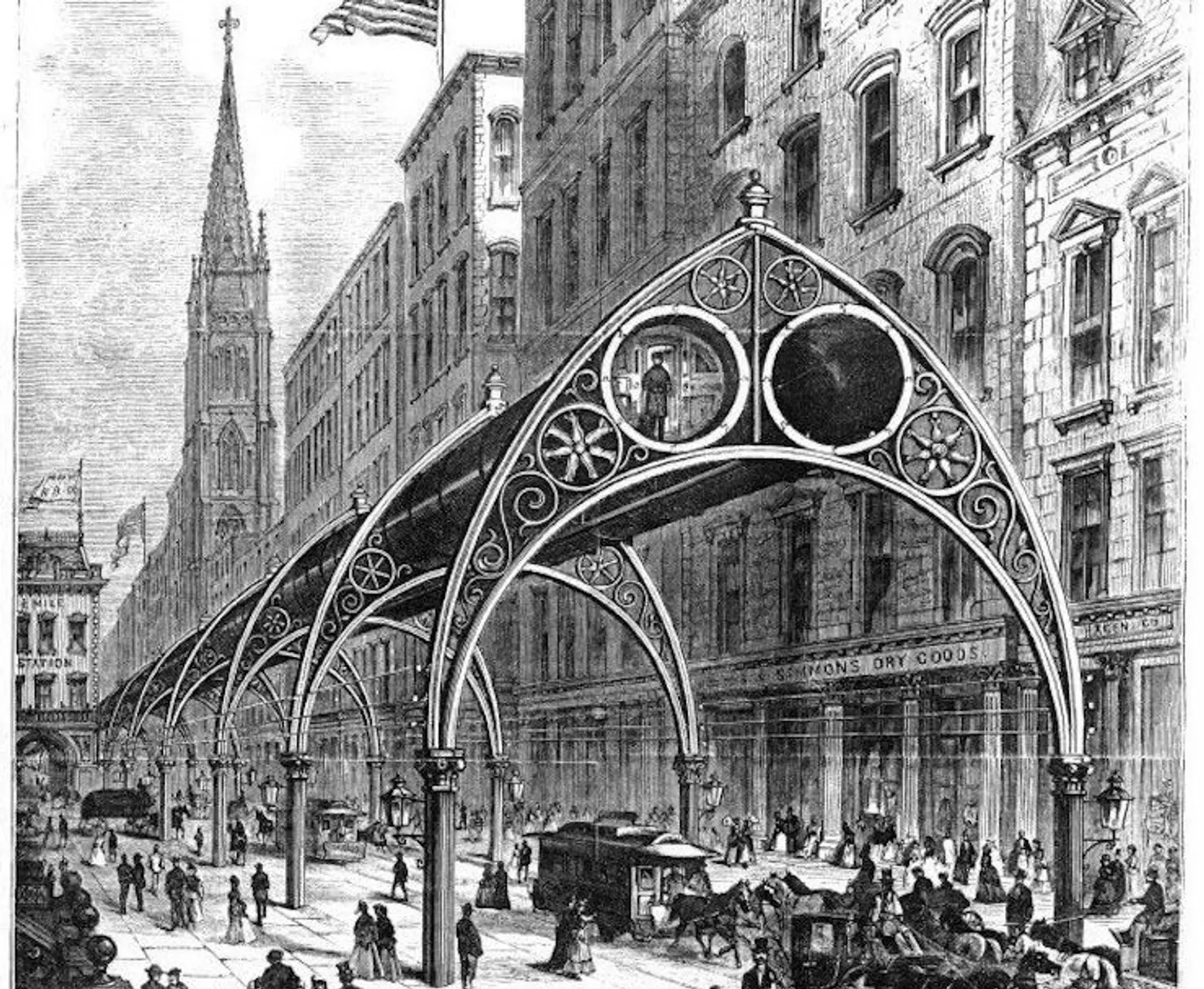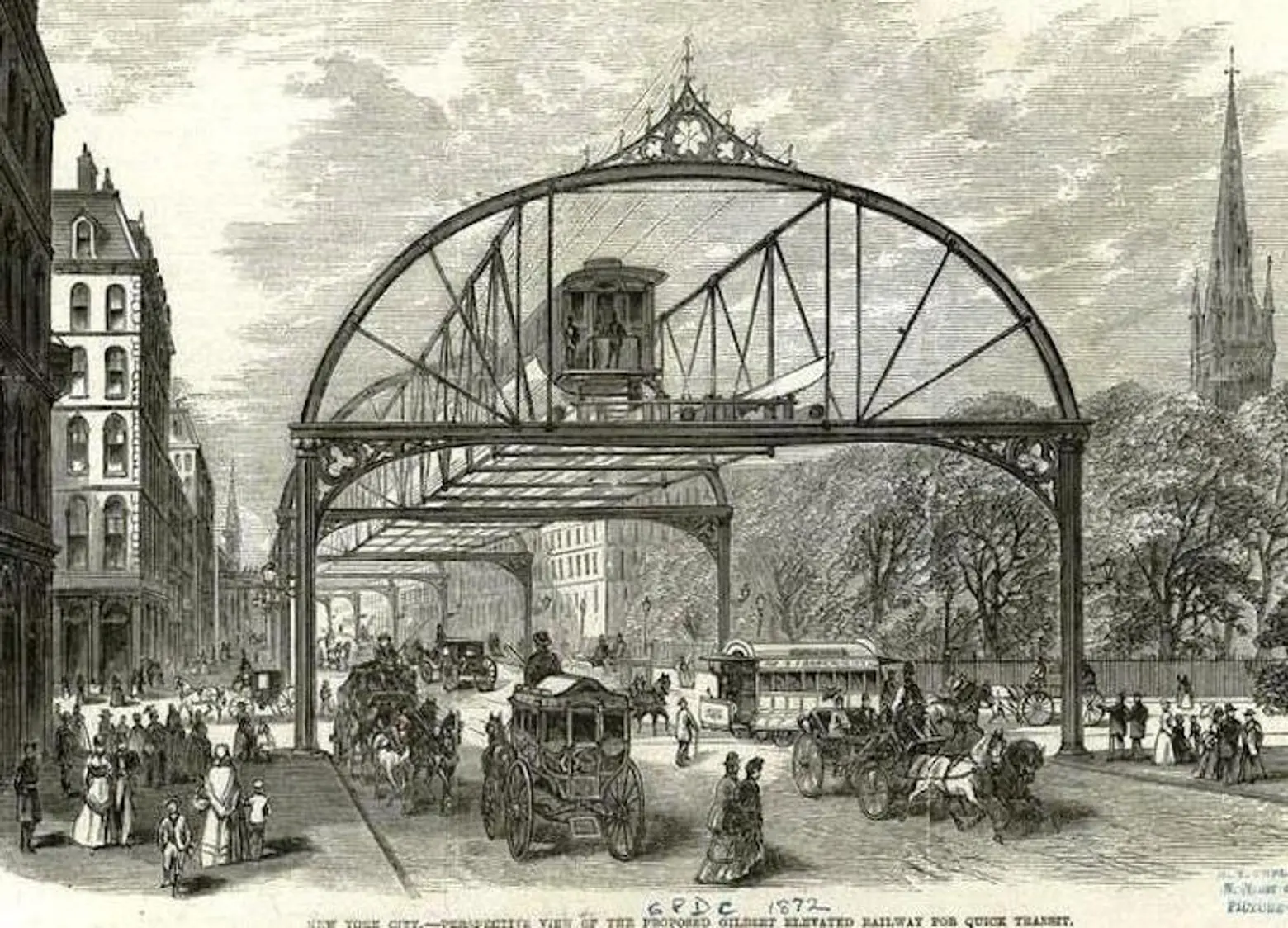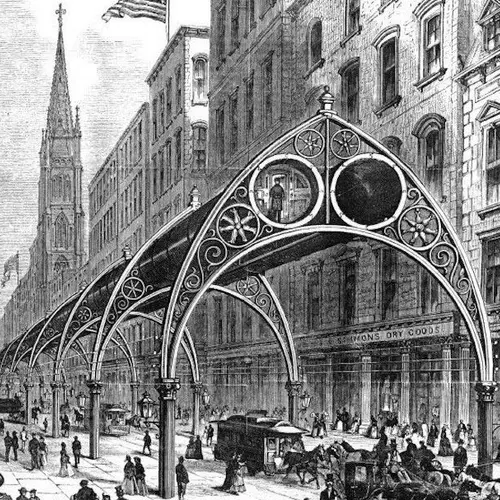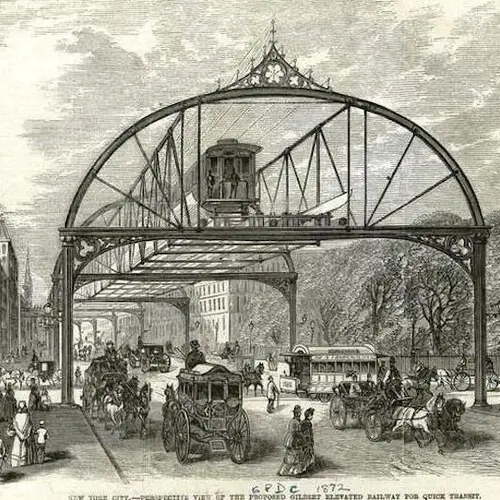A never-built transit plan would have shuttled New Yorkers through elevated tubes

6sqft has marveled at the 1951 proposal by Goodyear Tires for a giant conveyor belt to carry people between Times Square and Grand Central and Alfred Ely Beach’s underground pneumatic tube system. The New York Public Library’s Science, Industry and Business Library (SIBL) fills in the blanks on an early idea for an elevated rail system that was ahead of its time. In 1870, Appleton’s Journal of Literature, Science and Art introduced an article with a lament about the state of New York City public transportation that sounds uncannily familiar even in the 21st century: “the present means of travel are not only inadequate in extent, but are far too slow and cumbersome.” The anonymous author then tells of the futuristic vision of one Rufus Henry Gilbert, a New York-born surgeon, Civil War veteran and inventor.

Gilbert proposed the idea that passengers would travel through pneumatic tubes suspended above the city and be let out from two circular openings on either side. The same journal stated that, “The Elevated Railway is so far advanced as to have one track erected from the Battery to Thirtieth Street. In an experimental trip on this road it was found that the cars ran with great steadiness and smoothness, with little noise, and with uniform speed; while the transit seemed perfectly secure.”
The plan was to place compound Gothic arches along the street at distances from fifty to one hundred feet, from curb to curb, “at such an elevation as shall not interfere with the ordinary uses of the street.” A double line of atmospheric tubes eight or nine feet in diameter would be fastened onto the arches.
Through the tubes would run cars carrying passengers–along with mail and packages–propelled by atmospheric power. Stations would be situated at distances of about one mile apart, with pneumatic elevators to raise passengers up and down from the boarding area. Gilbert actually did get a charter for his plan; but unfortunately he wasn’t able to convince enough investors, and the financial panic of 1873 took the plan off the table.
New York City’s first actual elevated railway was the West Side and Yonkers Patent Railway, built by Charles T. Harvey. The railway ran on Greenwich Street from 1868 to 1870. It was later extended north and operated as the Ninth Avenue Line until 1940. Other elevated lines in Manhattan included the Second Avenue Line (1875-1942), the Third Avenue Line (1878-1955), and the Sixth Avenue Line (1878?-1938).
The Blizzard of 1888 with snowfalls up to 60 inches led to the thinking that the city’s transit system was better off underground. The Ninth Avenue elevated railway derailment of 1905, which claimed 13 lives, furthered that idea. The first underground transit line opened on October 27, 1904. The subway eventually grew to include 232 miles of routes and 468 stations, though not all proposed lines have been built.
[Via NYPL]
RELATED:
- In 1872, Broadway Almost Became a Giant Moving Sidewalk
- NYC’s first subway line moved passengers just one block
- A look back at the lost Grand Centrals of the late 19th century
- The Subway That Could Have Been: Mapping Never-Built Train Lines and Abandoned Stations
Images courtesy of NYPL.































